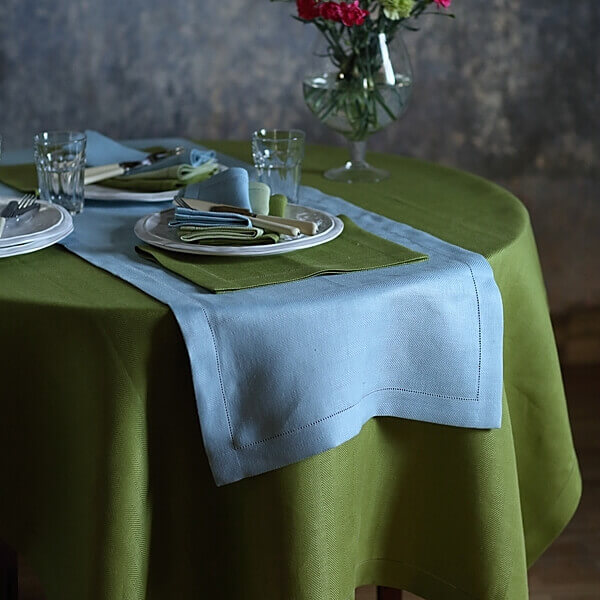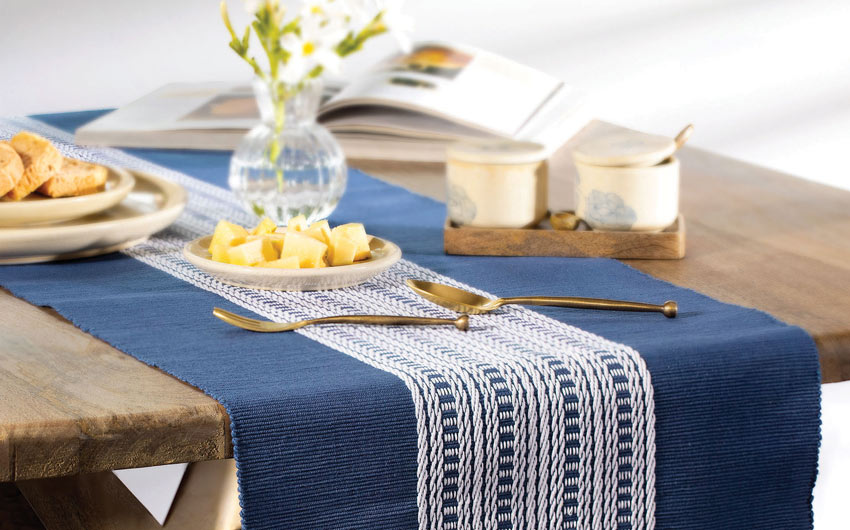Innovative Table Runner Makes Use Of: Beyond the Dining Table
Innovative Table Runner Makes Use Of: Beyond the Dining Table
Blog Article
Bed Linen Textile Technologies: Checking Out Modern Trends and Creative Applications in Layout and Textile Sector
From lasting production techniques to sophisticated weaving technologies, the evolution of linen is improving the landscape of the fabric market. As we dig right into the worlds of innovative layout applications and the emergence of bed linen blends and hybrid materials, a brand-new phase unravels in which linen's duty in future fabric technologies takes center phase.
Sustainable Practices in Linen Production
Sustainable practices in bed linen production have actually come to be progressively vital in the textile sector's efforts to lessen ecological impact and advertise ethical sourcing approaches. Linen, a natural fiber stemmed from the flax plant, offers a range of benefits such as longevity, breathability, and biodegradability. However, standard methods of linen production can include significant water consumption, pesticide use, and energy-intensive processes.
To resolve these difficulties, many textile producers are taking on lasting methods throughout the linen production process. This includes sourcing flax from natural farms that avoid unsafe chemicals and chemicals, executing water-efficient retting techniques to essence fibers from the flax stalks, and using environment-friendly dyes and finishes. Furthermore, some companies are purchasing sustainable energy sources to power their manufacturing facilities and reducing waste through recycling and upcycling efforts.
Technical Innovations in Bed Linen Weaving
With the growing focus on sustainable practices in bed linen production, the textile industry is now experiencing a surge in technological advancements specifically targeted at transforming the art of linen weaving. These advancements are improving the method linen textiles are produced, using enhanced efficiency, top quality, and imagination in weaving methods.
One of the vital technical advancements in linen weaving is the assimilation of electronic looms. These sophisticated looms are geared up with software that enables complex and complex designs to be woven with accuracy. By digitizing the weaving process, suppliers can accomplish higher consistency and accuracy in their bed linen textiles.
Additionally, developments in yarn spinning innovation have actually made it possible for the production of finer and more long lasting linen threads - table cloths. This results in softer and smoother bed linen fabrics that keep their high quality also after numerous uses and laundries
In addition, the advancement of eco-friendly dyeing processes and coatings for bed linen textiles is gaining traction. These sustainable practices not only lower the ecological influence but likewise satisfy the enhancing customer need for morally created textiles.
Creative Layout Applications for Linen
Innovative creative techniques are progressively forming the innovative layout applications for linen in the fabric industry. Bed linen's all-natural visual charm and capability to mix with various other textiles make it a favorite option for developing unique garments and accessories that cater to the eco mindful customer.
In addition, developers are trying out bed linen in home decoration, using its resilient and breathable nature to craft fashionable home furnishings such as drapes, bedding, and upholstery. The structure and drape of bed linen bring a sense of elegance and comfort to interior spaces, including a touch of sophistication to contemporary homes.

Linen Blends and Hybrid Fabrics

Hybrid fabrics, on the various other hand, take the concept of mixing an action even more by including additional aspects such as metallic strings, recycled materials, or conductive fibers. These innovative fabrics not just expand the design possibilities yet likewise introduce useful elements like conductivity, antimicrobial homes, or improved resilience. Crossbreed materials are significantly being used in different sectors, including fashion, interior style, and technical textiles, where the demand for multifunctional products is on the surge.
Bed linen's Duty in Future Textile Innovations

In the world of future fabric advancements, linen is expected to be a principal in the growth of sophisticated functional textiles. Developers and researchers are exploring methods to boost bed linen's integral qualities via technological innovations, such as including smart fabrics, nanotechnology, and performance coatings. These innovations intend to elevate bed linen's efficiency characteristics, making it appropriate for a broader array of applications, from activewear to protective apparel.
Additionally, the combination of linen with other all-natural or synthetic fibers opens unlimited opportunities for creating novel textiles with distinct buildings and performances. By leveraging linen's features and checking out cutting-edge blends, the fabric industry is positioned to introduce interesting growths that accommodate developing customer requirements and sustainability needs.
Conclusion
To conclude, the expedition of sustainable techniques, technical developments, creative style applications, bed linen blends, and its duty in future fabric innovations highlight the constant evolution of bed linen my company textile in the modern-day layout and fabric sector. With an emphasis on advancement and creative thinking, the versatility and environment-friendly nature of bed linen make it a valuable material for developers and makers alike, leading the way for more growths and innovations in the area of textiles.
As we dive right into the worlds of innovative layout applications and the emergence of bed linen blends and crossbreed fabrics, a new chapter unravels in which bed linen's role in future textile developments takes center stage.
Checking out the blend of bed linen with other materials has led to the appearance of ingenious blends and hybrid textiles in the modern fabric sector. Bed linen blends use an one-of-a-kind mix of the characteristics of bed linen with those of various other fibers, resulting in fabrics that have improved homes such as increased durability, boosted draping, and lowered wrinkling.The evolution of bed linen blends and crossbreed materials has actually established the stage for Linen to play an essential duty in driving future textile advancements.In the world of future fabric technologies, linen is anticipated to be a vital gamer in the advancement of advanced functional textiles.
Report this page